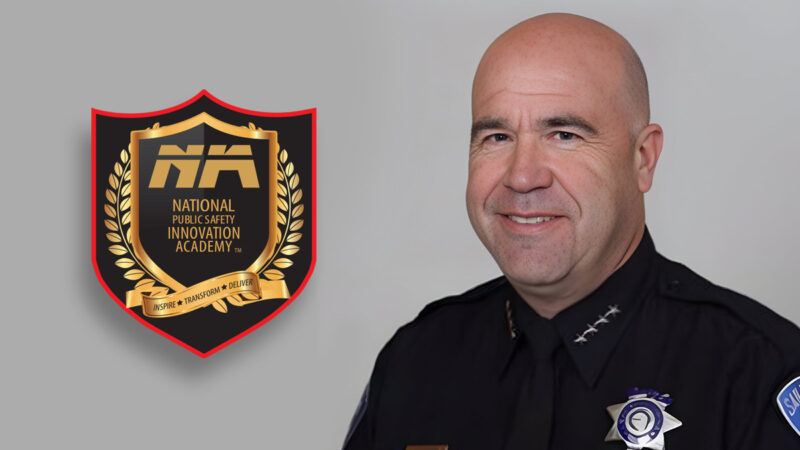Retired San Bernardino chief gives NIA insight on critical incident management

Over the program’s eight weeks, National Public Safety Innovation Academy (NIA) participants examine four case studies from major critical incidents that are intended to evoke thoughts about ways agencies can be better prepared.
During the program, participants learn from nationally recognized subject matter experts on a variety of topics. Retired Chief Jarrod Burguan, who spent 27 years with the San Bernardino Police Department, lectured to the first cohort on public safety integration, which teaches participants how to efficiently work together with multiple public safety entities. Burguan also facilitates the case study on the December 2015 San Bernardino terrorist attack in which he led the response.
“Prior to that experience, I had been to case debriefs before,” Burguan said. “When we had that incident, we were fortunate to have the help and experience of other agencies. Anything we can do to help agencies respond appropriately is a benefit. The goal is to improve performance.”
During the attack, a radicalized couple opened fire on dozens of San Bernardino County employees in a public conference room. In recent highly publicized shootings like in Nashville, Tenn. and Uvalde, Texas, Burguan noted that the scrutiny is usually on how law enforcement responds, but managing the flow of information and working with outside entities are also vitally important. Those are key points expressed in his lecture.
“There’s not a lot of training on the leadership portion,” Burguan added. “In cases like this, the focus is usually on response. There isn’t much on how to deal with 200 different officers from outside your town.”
About 300 officers responded as 14 people were killed and 22 others were injured during the 2015 attack. Including hospitals, more than 20 different entities were involved in the response.
“The need for communication really stood out about his lecture – not just between us but with other agencies,” said Maj. William Galloway of the Polk County Sheriff’s Office, an NIA participant, and 29-year law enforcement veteran. “It’s also important to make sure we have the effective equipment that we need. Real-time training is key; we always need to prepare as if this is going to happen tomorrow and work well with our surrounding agencies.”
Burguan was tasked with leading the response at the time of the attack. He’s been lecturing on critical incident responses since shortly after.
“With these case studies, the goal is to step behind the scenes,” he said. “We really talk about the things we learned. This has less to do with storytelling and more about how to manage the chaos as it’s happening.”
NIA was established in partnership between Polk State College and the Polk County Sheriff’s Office as an executive-level course that prepares the law enforcement and corrections leaders of tomorrow to take the next steps in their careers. The STEM-based program uses leading-edge strategies to help mid-level managers craft innovative policies and direct high-liability situations that agencies face today.
“As law enforcement, we’re always trying to be prepared,” said Sgt. John McKee, an NIA participant from the Bartow Police Department. “Having people who were directly involved in something like this – there’s nothing better training-wise. He took us through the entire narrative step-by-step. The debriefs have been absolutely amazing.”
Burguan served his final six years as chief of the San Bernardino Police Department before retiring in 2019. In addition to lecturing, Burguan currently serves as a police consultant, advisor, and contributor for ABC News. Although most in law enforcement will never face a crisis that reaches the scale of the 2015 San Bernardino attack, Burguan said the information is valuable for all participants.
“All of us in the profession face crises on a daily basis and all of it is scalable,” he said. “The lesson learned is that you have to think about all the things you have to manage when you’re going through these critical incidents.”
The first NIA cohort featured 21 graduates from eight different states.
“The participants really seemed to appreciate stepping behind the scenes and the insight,” Burguan said.
The next NIA cohort begins Sept. 18. More information and registration are available at www.polk.edu/NIA. One of just three national command schools in the U.S., Burguan foresees success for the program.
“Anywhere that you can develop and help tomorrow’s leaders prepare for the future with the lessons of the present and the past, that’s a great thing,” he said. “I think it’s going to continue to grow. I think it’s going to fill a void and be a nice training destination for the profession.”

